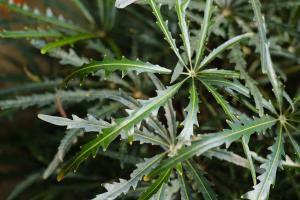Introduction
Cantaloupe plants are a popular crop for gardeners and farmers due to their delicious and nutritious fruit. However, like many plants, cantaloupes are susceptible to various diseases and pests. One such disease that affects many vegetable plants is blight. But do cantaloupe plants also get blight like tomato plants do? In this article, we will explore this question in detail.
What is Blight?
Blight is a term used to describe a number of diseases that affect plants. It is caused by various fungi, bacteria, and viruses that attack the leaves, stems, and fruit of plants. The most well-known type of blight is tomato blight, which is caused by the fungus Phytophthora infestans. This disease can quickly kill tomato plants, causing the leaves to turn brown and wilt, and the fruit to rot on the vine.
Do Cantaloupe Plants Get Blight?
Cantaloupe plants are not immune to blight, but they are less susceptible than tomato plants. The most common type of blight that affects cantaloupes is Alternaria blight, which is caused by the fungus Alternaria cucumerina. This disease can cause brown or black spots to form on the leaves and fruit of cantaloupes, and may also cause the fruit to rot prematurely.
Preventing Blight in Cantaloupe Plants
Fortunately, there are several measures that can be taken to prevent blight from affecting cantaloupe plants. The first step is to choose disease-resistant varieties of cantaloupe when planting. In addition, it is important to keep the plants well-watered, but not over-watered, as excess moisture can encourage the growth of blight-causing fungi. Proper pruning and sanitation practices, such as removing infected plant parts and keeping the garden clean, can also help prevent the spread of blight.
Treating Blight in Cantaloupe Plants
If blight does occur in cantaloupe plants, there are several treatment options available. Fungicides can be applied to infected plants to help control the spread of the disease. In addition, infected plant parts should be promptly removed and destroyed to prevent the spread of the disease. It is also important to monitor the garden closely and take action at the first sign of blight to prevent it from spreading to other plants.
Conclusion
In conclusion, while cantaloupe plants are not immune to blight, they are less likely to be affected than tomato plants. Choosing disease-resistant varieties and implementing proper prevention and treatment measures can help keep blight from affecting cantaloupe plants. By following these practices, gardeners and farmers can enjoy a bountiful harvest of healthy and delicious cantaloupes.

 how many times do yo...
how many times do yo... how many planted tre...
how many planted tre... how many pine trees ...
how many pine trees ... how many pecan trees...
how many pecan trees... how many plants comp...
how many plants comp... how many plants can ...
how many plants can ... how many plants and ...
how many plants and ... how many pepper plan...
how many pepper plan...































